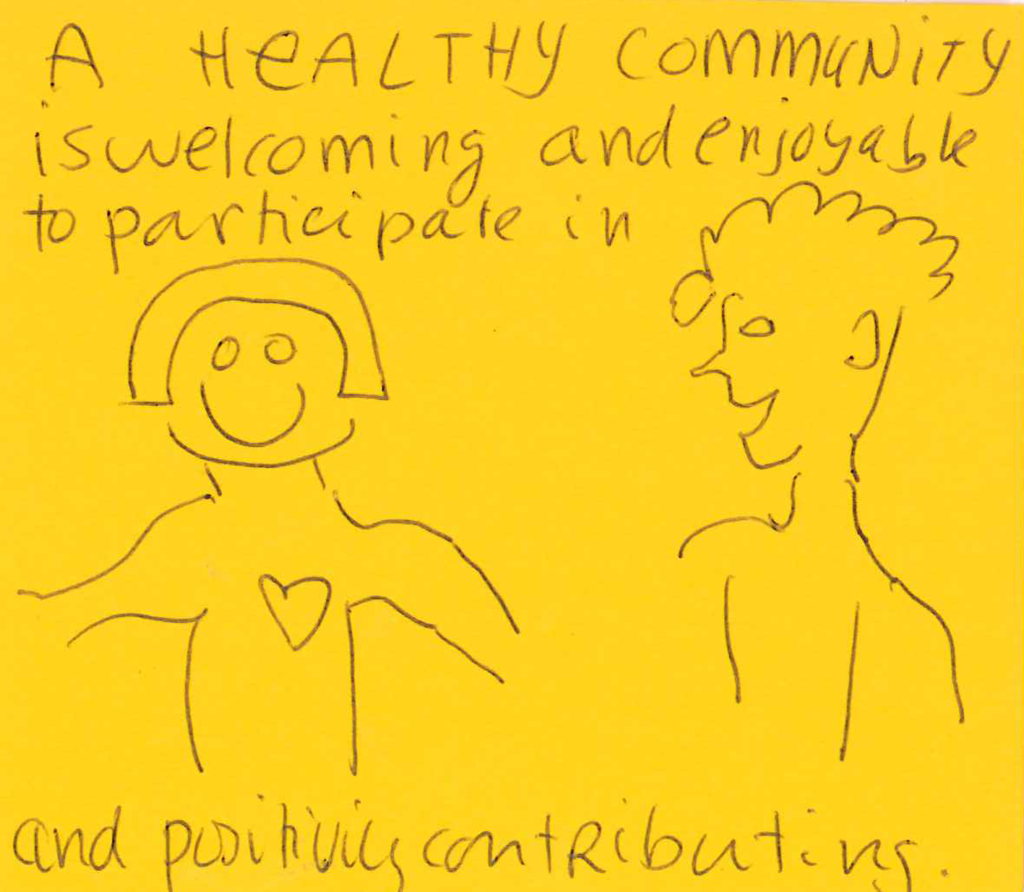As I wrote in my previous article in this series, I first logged on to Twitter in December 2010 to talk about my experiences as a chronic disease patient who has had good results by having conventional medical professionals and integrative medical professionals on my healthcare team. I wanted to make a difference, to help others improve their healthcare experience and empower people to live life to the fullest. I was going to do it through collaboration, mutual respect, and nuanced discussions.
In many cases, I have been very successful. In others, not so much. I have preached about the power of community and working together, yet I have participated in acts of “taking sides.” I’ve contributed to polarization. I haven’t always remembered why I started. I’ve offered apologies on social media for anything that I have posted that may have been seen as unkind, polarizing, or combative. From day one, my intentions have been positive and sincere, but my actions may not have always reflected my intentions. I have recentred to focus on respectful engagement with each post.
What I have learned is that most of the “debating” happens at the extremes, whereas most of the solutions happen in the very large middle. In some debates, the extremes are represented by patients offered a “false hope” treatment (often by charlatans or profiteers) at one extreme and patients NOT offered further treatment after a diagnosis (often by well-meaning practitioners that aren’t aware of alternative interventions) represents the other extreme of “false no-hope.” The solutions come when we focus on grounded hope in the middle. In other cases, the extremes are represented by the disempowered patient at one extreme and the falsely empowered patient at the other extreme; solutions come when we focus on the truly empowered patient in the middle. This is where communities can thrive. However, we can still respect each person regardless of their extreme, impassioned views.
When it comes to discussion regarding health and health outcomes, a few terms are triggering and lead to divisiveness and polarization, to people becoming firmly entrenched in their opinions that the system they support is somehow the “right way,” and “only right way” to approach health conditions. Amongst these are terms like “integrative medicine,” “evidence-based medicine,” and “whole-patient care/holistic health.” Each of these terms are labels that various healthcare practitioners might use for their own practice. Yet under each label, you can also find practitioners who are misrepresenting themselves or their services by using these labels inappropriately. In online discussions, people often misuse the terms — either because they don’t understand the terms or because they are trying to mislead others. Each term is sometimes hijacked in order to strengthen someone’s position in online health-related debates. While these terms have pretty clear definitions, the often-intentional misrepresentation associated with the use of the terms has become a lightning rod of divisiveness, further contributing to polarization. If we move beyond the polarization and dig a bit deeper, there is little need for these terms to be polarizing. Maybe we need to move beyond these terms. Pause. Breathe. Continue.
So where is this polarization regarding chronic disease and mental health diagnoses and treatment options occurring on social media? Most will agree that “conventional medicine” works quite well for acute conditions like broken bones, heart attacks, etc. For chronic disease and mental illness, conventional medicine is not working as well. Most would also agree that conventional medicine does well at managing SOME chronic conditions/mental illnesses, such as asthma, diabetes, epilepsy, and others (of course, there are always people who either don’t follow their treatment protocol or for whom the treatment works less well). This is NOT where the debate is happening. This is NOT where the polarization is occurring.
But the numbers of people who experience chronic disease and mental health conditions are not improving in any significant manner, despite the fact that many chronic diseases and mental health conditions are preventable and many can be put into remission. The conventional medical system is a “diagnose and treat” model with less focus on prevention and it is not having an impact of decreasing the prevalence of chronic disease and mental illness. There are many reasons for this, including lack of time with patients, and not focusing on the “whole” person. There is no reason for this assertion to be polarizing. Period. Full stop.
This is where other forms of “medicine” enter the picture; let’s use the term “integrative medicine” for example. Again, no reason for polarization. Generally speaking, more time is spent with the patient, and much of the patient’s lifestyle circumstances are considered. There are a lot of success stories where a patient’s quality (and quantity) of life has improved (sometimes significantly) while working with good integrative medicine practitioners. But there’s a “BUT” to this way of practicing healthcare as well. BUT…there are folks who take advantage of the concepts behind integrative medicine and use them in a, shall we say, “not-as-intended” manner. There are many charlatans and lots of profiteering taking place in the integrative medicine space. This is where the debate is happening. This is where the polarization is occurring.
It is good to call out charlatans and profiteers. It is good to call out what is truly misinformation. It is good to call out bad practices. It is good to call out bad science. This benefits patients. This does not fuel distrust in science and medicine. This does not add to polarization. But calling out ALL of conventional medicine for not being very good at improving the number of chronic disease and mental illness diagnoses or calling out ALL of integrative medicine because of people abusing the intent and ignoring the benefits and results that have been achieved is a problem. This DOES NOT benefit patients. This DOES fuel distrust in science and medicine. This DOES add to polarization. It DOES NOT contribute to collaboration, mutual respect, and nuanced discussions. So pause for a minute. Recognize the emotions that people feel when they see the terms that are leading to polarization. Find other ways to engage.
Can we decrease the prevalence of chronic disease and mental illness? I think so. Can we improve healthcare systems’ approach to chronic disease and mental illness? I think so. Can we create healthy communities? I think so. Engaging respectfully on social media with an intent to connect, listen, and grow is a great place to start. Together. As a community.




